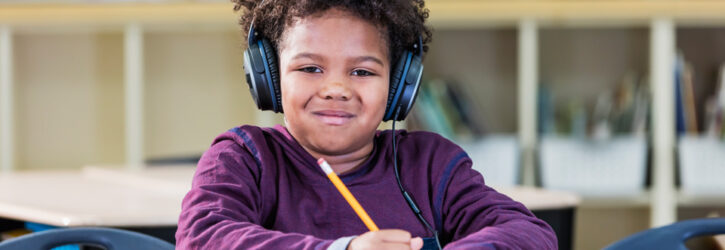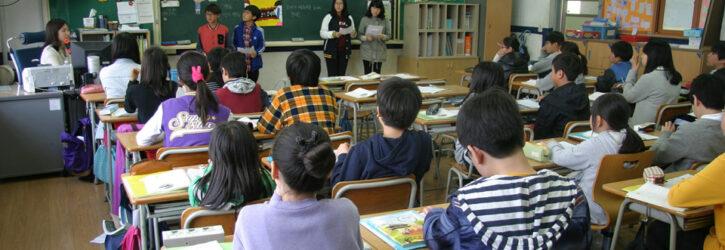
Resources for Schools
Some learners struggle with areas of learning and yet leave you in no doubt that they have considerable strengths; understanding complex information easily or showing ‘flashes of brilliance’. Others, you feel, may have a special educational need or disability but do not quite fit the profile and leave you wondering exactly how to support them. Have you considered whether these learners might have Dual or Multiple Exceptionality – DME?

Advice Sheet
What is DME?
In this document, nasen summarises some key ideas relating to Dual or Multiple Exceptionality. It assists teachers and leaders in understanding how DME is identified and how it may affect learning. The document offers practical advice, with brief indicators of what schools can do to improve DME provision and how teachers can cater for DME.

Video
An Introduction to DME
nasen Webinar
This free webinar from nasen and funded by the Comino Foundation, is suitable for SENCOs, SLTs and other school staff who are interested in finding out more about DME. It covers the following:
- What DME is and what it looks like in a school setting.
- Why it is important in the school setting to support pupils who have DME.
- How many pupils have DME and how schools can support them.

Video
Why and How Should We Support Children with DME in School?
nasen Webinar
This webinar recording from nasen is suitable for SENCOs, SLTs, teachers and other senior leaders with responsibility for inclusion who are interested in finding out more about DME and understanding the relationship between pupils with SEND and bullying.

Advice Sheet
DME Profile Builder
This supportive guidance document from nasen can be used to support practitioners in recording the way that SEND and high learning potential interlink. It provides a starting point to review the needs of pupils with DME and is suitable for teachers, teaching assistants, learning mentors, schools and colleges.

Article
Best Practice in Provision for Dual or Multiple Exceptional (DME) Learners by Rebecca Howell
This SEND Gateway article, by Rebecca Howell, Senior Education Consultant at Potential Plus UK, summarises best practice in supporting learners with DME and is aimed at teachers and other professionals within school settings.

Article
10 Key Factors in Educating Young People with Dual or Multiple Exceptionality (DME) by Rebecca Howell
In this blog, Rebecca Howell, Senior Education Consultant for Potential Plus UK, distils the important factors in providing high quality education for young people with dual or multiple exceptionality (DME), offering 10 keys to unlocking the right support for DME learners that will show an increase in their wellbeing, engagement and achievement.

Advice Sheet
S601 High Learning Potential with Special Educational Needs
This advice sheet from Potential Plus UK, aimed at teachers and other professionals in school settings, explains what dual or multiple exceptionality is, how it can affect a learner, what you can do to spot the signs of DME in the classroom and how to develop a strategy for supporting learners with DME within school.

Advice Sheet
S602 Identifying Dual or Multiple Exceptional (DME) Learners
This advice sheet from Potential Plus UK, aimed at teachers in all school phases, offers guidance about how to identify learners with DME. It considers various approaches that can be taken to ensure that these children do not fall through the net.

Advice Sheet
S106 Profiles of High Potential Learners
In 1988 (revised in 2010), following extensive research into gifted education, Maureen Neihart and George Betts proposed six profiles of children with high learning potential, one of which is DME. This advice sheet, from Potential Plus UK, is aimed at educators who want to find out more information about high learning potential or who are looking for ways to support and provide for high potential learners in the classroom.

Publication
Guide to HLP for Schools
This booklet, from Potential Plus UK, covers how to recognise children with high learning potential in the classroom, the myths and realities of high learning potential, explains asynchronous development, what dual or multiple exceptionality (DME) is, and offers tips for supporting children with high learning potential in the classroom.

Advice Sheet
S317 Handwriting Difficulties and High Potential Learners
High potential learners who have difficulty with handwriting can sometimes be misunderstood in school, especially if ability and achievement are being assessed in written work and tests. It is important for these learners to have opportunities to also present their knowledge in other ways. This advice sheet from Potential Plus UK is aimed at teachers and others in an educational setting and suggests ways that this might be addressed.

Advice Sheet
S502 Asynchronous Development in High Potential Learners
Asynchronous development, whereby a learner appears to be ‘wise beyond their years’ but in many ways is still very immature, has been described as one of the defining characteristics of exceptionally high potential learners. This advice sheet, from Potential Plus UK, explores issues relating to asynchronous development in high potential learners and provides useful strategies and guidance to teachers on how to support learners who are developing asynchronously.

Advice Sheet
Starry Night Observation Protocol
This protocol, from Potential Plus UK, provides a useful framework for celebrating and recording a learner’s abilities and talents over time and contains unusual items that would not necessarily fit into the usual measures of ‘ability’. It has a record sheet that encourages the documentation of observed behaviours, including a description, and generates detailed information that is more evidence-based than simple checklists.

Advice Sheet
S10 Example Challenge
and Support Plan
This advice sheet, from Potential Plus UK, provides teachers and others with an example of a challenge plan for a high potential learner. It addresses both strengths and areas of development/needs and can be used by lead teachers or others with responsibility for learners with high potential and DME as a basis to develop similar plans for their own learners.

Report
The Current State of Provision for Learners
with DME by Amy Bonsall and Brian Desmond (2022) DME Trust
This report, commissioned by the DME Trust, considers the current provision that exists for learners with dual or multiple exceptionality (DME) – learners who have both special education needs or disabilities and high learning potential – through the experiences of parents, carers, educators and service providers. It found that many learners with DME remain unidentified and unsupported by the education system.

Publication
Identification of Learners with DME (2021) Nisai Education Trust
This publication offers pathways to help spot dual or multiple exceptionality (DME) in children and young people and case studies to demonstrate how approaches for children with DME can be tailored in areas such as cognitive style, interpersonal relationships and academic achievement. Although these booklets were developed with alternative provision in mind, they are useful for understanding and supporting learners with DME in all educational contexts.

Publication
Supporting Your Learner with Dual or Multiple Exceptionality (DME) (2021) Nisai Education Trust
Once you have identified a learner with dual or multiple exceptionality – DME – tailored and strength-based approach plans already developed by alternative education providers need to be adjusted to factor in DME. This booklet outlines SMART goals and case studies for areas such as: nurturing high learning potential, supporting cognitive style, encouraging academic achievement, fostering interpersonal relationships, promoting intrapersonal understanding.

Publication
The School Handbook for Dual and Multiple Exceptionality by Denise Yates and Adam Boddison (2020) Routledge
The School Handbook for DME offers a range of practical strategies to support SENCOs, GATCOs, school leaders and governors in developing effective provision for children that have both high learning potential and special educational needs or disabilities at the same time. Building on the principles of child-centred provision and coproduction, it provides useful tips on developing the school workforce to better identify and meet the needs of learners with DME.

Report
Dual and Multiple Exceptionality (DME) – The Current State of Play by Alison Ryan and Chris Waterman (2018) nasen
This report was commissioned by nasen as a key part of a campaign to ensure that children and young people with dual or multiple exceptionality (DME) are provided with the support to enable them to realise their full potential. A definition of DME that can be widely accepted by parents and professionals is proposed, what is known about DME is examined, and recommendations are made that would result in a greater recognition of, and thus support for, children and young people with DME.

Report
Report on Handwriting and Achievement by Diane Montgomery (2016)
This report investigates whether a self-selected group with high learning potential exhibits any of the handwriting and spelling difficulties previously observed in general school samples, acknowledging that it would be a tragedy if pupils with extreme giftedness were denied opportunities for achievement because of unrecognised difficulties in writing. This report sets out the results of these investigations, conclusions that can be drawn, and points for further discussion on the matter.

Report
Too Much Too Soon? The Emotional and Mental Health Issues of the UK’s High Learning Potential Children (2015)
This report from Potential Plus UK, explores the extent to which children in the UK with high learning potential are experiencing emotional and mental health issues. The findings of the research, along with recommendations for a framework of support to address the issues are set out within the report, as well as starting points for further discussion around how to support the emotional and mental health of the UK’s children with high learning potential.

Publication
Teaching Gifted Children with Special Educational Needs: Supporting Dual and Multiple Exceptionality by Diane Montgomery (2015)
This book provides an overview of existing knowledge about dual or multiple exceptionality, examining the needs of gifted and talented children from both the class teacher’s and SENCo’s perspectives.

Publication
Helping to Find and Support Children with Dual or Multiple Exceptionalities. Department for Children, Schools and Families Guidance (2008)
This DCSF booklet dating from 2008 provides information on identifying and supporting children who are highly able with sensory impairment, learning problems, conduct issues and/or disabilities.
National Association for Special Educational Needs (nasen)
nasen House
4/5 Amber Business Village
Amber Close
Amington
Tamworth
Staffordshire
B77 4RP
Tel: 01827 311500
Email: welcome@nasen.org.uk
Potential Plus UK
The Open University
Vaughan Harley Building Ground Floor
Walton Hall
Milton Keynes
MK7 6AA
Tel: 01908 646433



